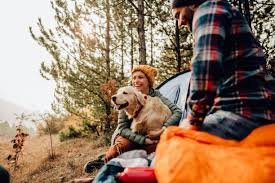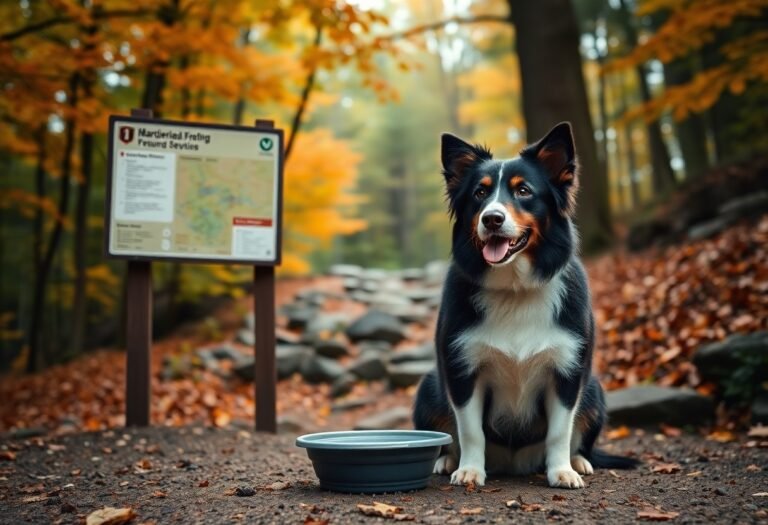Science reveals that engaging your dog in regular adventures can significantly diminish their anxiety levels. By exploring new environments, your furry friend experiences mental stimulation and physical exercise, both of which contribute to a calmer disposition. Understanding the relationship between adventure and anxiety can empower you to enhance your dog’s quality of life and deepen your bond. Through this post, you’ll discover practical ways to integrate adventure into your dog’s routine, leading to happier, more relaxed tails.
The Link Between Adventure and Dog Psychology
Engaging in adventure not only stimulates your dog’s physical health but also positively influences their mental state. Exploring new environments and experiencing different stimuli can lead to a surge in dopamine, reducing anxiety levels. Studies show that dogs exposed to novel situations, such as hiking trails or dog-friendly parks, exhibit decreased signs of fear and stress, reinforcing a strong connection between adventure and improved canine psychology.
Understanding Canine Anxiety Triggers
Identifying what triggers anxiety in your dog is vital for effective management. Common triggers include loud noises, unfamiliar people, changes in routine, and prolonged isolation. Each dog has unique responses, and awareness of these factors can help you create a supportive environment that minimizes anxiety and enhances comfort.
The Role of Environment in Stress Levels
Your dog’s environment directly impacts their stress levels. An overstimulating area filled with distractions can heighten anxiety, while calming spaces promote relaxation. Factors like noise, crowd density, and overall safety play significant roles in either increasing or reducing stress during adventures.
Consider how various aspects of the environment contribute to your dog’s comfort and anxiety management. For instance, quiet parks with open spaces allow your dog to explore freely, reducing feelings of being overwhelmed. In contrast, bustling urban environments may trigger stress for some dogs. Tailoring your adventure locations to suit your dog’s personality helps mitigate stress and elevates their overall experience, reinforcing the positive effects of your time together. A safe, familiar backdrop can make all the difference in transforming anxious tendencies into joyous exploration.
The Physiological Benefits of Exploration
Exploring new environments enables dogs to tap into their natural instincts, resulting in numerous physiological advantages. Increased heart rates during adventures improve cardiovascular health, while also enhancing respiratory functions. Exposure to different scents and terrains stimulates their senses, promoting mental agility and reducing feelings of anxiety. Regular exploration sessions can lead to a more balanced hormonal profile, fostering overall emotional well-being.
How Adventure Stimulates Endorphin Release
Engaging your dog in adventures leads to the release of endorphins, the body’s natural feel-good chemicals. As your dog explores, these hormones flood their system, creating sensations of joy and reducing stress levels. Endorphins are particularly effective in mitigating anxiety, helping your furry friend feel more secure and relaxed during both adventures and at home.
The Impact of Physical Exercise on Mental Health
Physical exercise, particularly through adventure, significantly impacts your dog’s mental health. Activities like running, hiking, or playing in new environments stimulate the release of not just endorphins but also serotonin, which uplifts mood and combats anxiety. By consistently engaging in physical challenges, your dog not only builds strength but also develops coping mechanisms for stress, leading to a more harmonious mental state.
Research reveals that dogs subjected to regular physical exertion exhibit lower levels of cortisol, the stress hormone. A study by the University of Lincoln found that dogs participating in regular physical activity were less likely to show signs of anxiety and aggression. This correlation highlights how structured exercise through exploration can serve as a proactive measure in preventing behavioral issues, fostering a happier, healthier life for your dog. By making adventure a central aspect of your routine, you’re equipping your dog with the tools needed for emotional resilience.
The Power of Novelty: Rethinking Routine
Routine can provide structure, but introducing novelty into your dog’s life is vital for their mental well-being. New experiences not only break the monotony but also engage your dog’s senses in ways that familiar environments cannot. Exploring fresh trails, encountering different animals, or even trying varied games can stimulate your dog’s curiosity and vitality, creating a more balanced emotional state.
The Science of Curiosity and Learning in Dogs
Your dog thrives on curiosity, which drives them to explore and learn from their surroundings. Numerous studies show that exposure to novel stimuli can enhance brain function and promote neuroplasticity. This capability allows your dog to adapt dynamically to new challenges, reducing anxiety and increasing overall happiness.
How New Experiences Enhance Coping Mechanisms
New experiences play a significant role in enhancing coping mechanisms in dogs. Exposure to diverse environments helps dogs to develop confidence, allowing them to better handle stressors they encounter in everyday life. For instance, a dog that regularly explores varied spaces learns to adapt to changes, making them less reactive to sudden noises or unfamiliar situations.
Engaging with different stimuli—like new smells, sights, or interactions—builds resilience in your dog. This resilience manifests as improved emotional regulation; a dog accustomed to encountering various experiences is often more adept at managing anxiety when faced with unexpected events. For example, dogs that participate in agility courses or scent-detection games not only gain physical exercise but also develop problem-solving skills and adaptability. As new situations arise, your dog can draw upon these experiences, reinforcing their ability to cope and thrive in varied circumstances.
Practical Adventure Strategies for Pet Owners
Integrating adventure into your dog’s life doesn’t have to be an overwhelming task. Simple yet effective strategies can transform everyday outings into stimulating experiences, reducing anxiety while promoting happiness. From selecting suitable locations to incorporating elements of surprise, these practical tips will help you create an enriching adventure routine tailored to your dog’s needs.
Planning Outings that Alleviate Anxiety
Choosing the right environment is key to alleviating your dog’s anxiety during outings. Parks with open spaces, nature trails, or quiet beaches provide a serene backdrop, encouraging exploration without overwhelming stimuli. Gradually introducing your dog to these settings and monitoring their comfort level allows you to tailor each adventure to their specific needs, ensuring a positive experience.
Incorporating Play and Socialization in Activities
Highlighting play and socialization during outings enhances your dog’s adventure and psychological well-being. Activities such as fetch, tug-of-war, or agility courses encourage engagement and playfulness. Seeking dog-friendly spaces where your pet can interact with other dogs breeds camaraderie and boosts confidence, ultimately helping to reduce anxiety levels.
Fostering healthy socialization among dogs is vital for emotional stability. Organizing playdates or attending dog parks can facilitate interactions that enhance your dog’s social skills. Engaging in group activities, such as organized hikes or dog training classes, not only provides physical exercise but also exposes your pet to different environments and companions. This varied social landscape encourages adaptability, helping your dog build confidence and comfort in new situations.
Real-Life Transformations: Inspiring Stories of Happy Tails
Countless dog owners have witnessed profound changes in their pets’ behaviors through adventurous activities. From timid pups transforming into confident explorers, to anxious furballs finding their courage on hiking trails, these stories illustrate the efficacy of outdoor experiences. One notable case involved a rescue dog named Buddy, who struggled with separation anxiety before his owner introduced him to agility courses. Buddy not only overcame his fears but also discovered joy in overcoming obstacles, showcasing the power of adventure in fostering resilience.
Examples of Successful Adventures Reducing Anxiety
Many dogs like Max, once fearful of the world, found solace through regular trips to dog-friendly beaches and parks. With each visit, his anxiety diminished, and his playful spirit emerged, leading him to make friends with other dogs. Similarly, Bella, a border collie, thrived on weekend hiking adventures, which not only elevated her mood but also strengthened the bond with her owner, reducing her anxiety significantly.
Lessons Learned from Canine Companions
Your dog can teach you invaluable lessons about living in the moment and embracing new experiences. Observing how dogs approach unknown environments helps you appreciate the importance of adaptability and exploration. Their ability to find joy in simplicity, such as a new park or a stick in the woods, highlights how enriching life can be with some spontaneity. By immersing yourself in these experiences alongside your canine companion, you not only foster their mental health but also enhance your own overall well-being.
The spontaneity of canine adventures reveals the immense rewards of stepping outside your comfort zone. For instance, dogs like Max and Bella demonstrate how a simple change in routine can lead to remarkable transformations in behavior and mood. As you watch your dog embrace new challenges, you learn the art of adaptability, allowing your own stressors to melt away. Dogs remind you that happiness often resides in the little moments; engaging with them through adventures enriches both your lives, creating a stronger, anxiety-free bond based on shared experiences.
Summing up
Conclusively, engaging your dog in adventurous activities not only enhances their physical fitness but also plays a significant role in alleviating anxiety. By exposing your pet to new environments and experiences, you help stimulate their senses and encourage confidence. This reduction in stress can lead to better behavior and a more balanced emotional state. So, as you consider your dog’s well-being, prioritize adventures that foster joy and exploration, ensuring a happier, healthier life for your furry companion.





